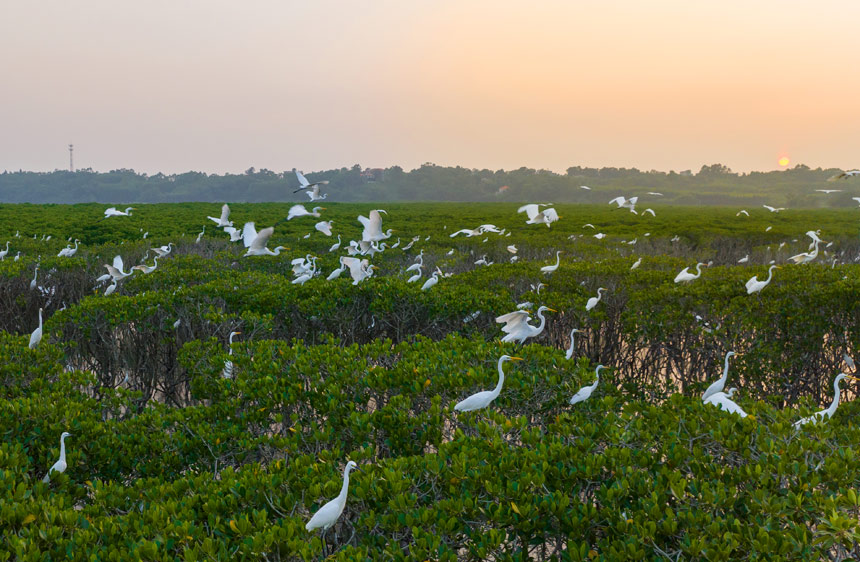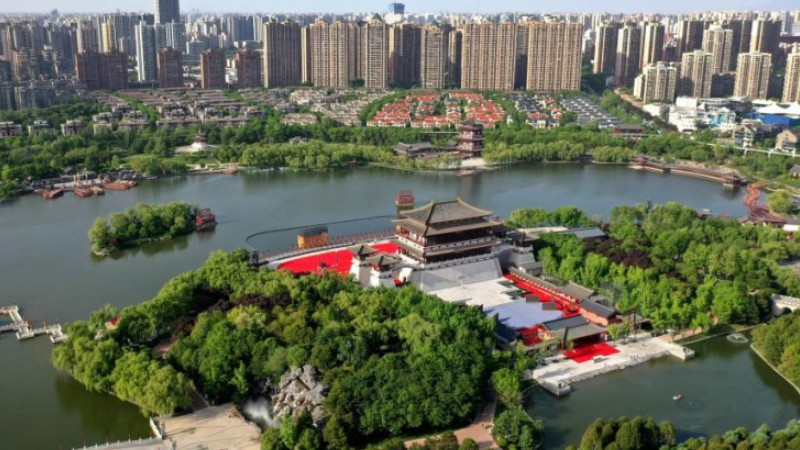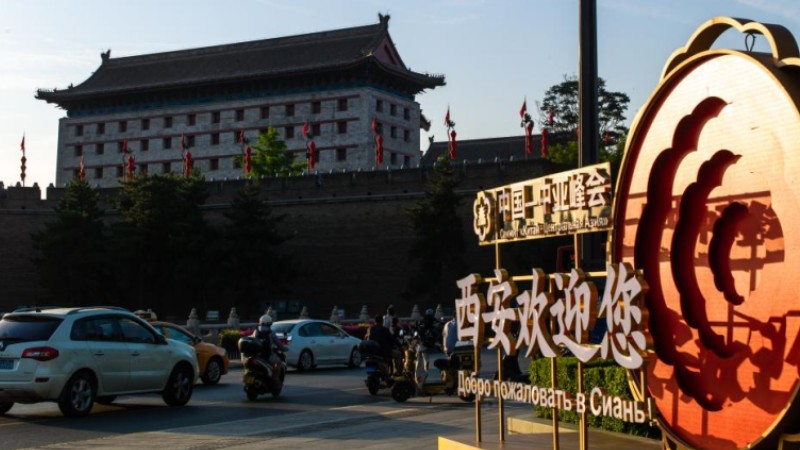Hepu in S China's Guangxi moves to protect mangrove forests
Egrets rest in a mangrove forest in Hepu county, Beihai city, south China's Guangxi Zhuang Autonomous Region. (Photo/Zhang Guobin)
The Shankou National Mangrove Ecological Nature Reserve, located in Hepu county, Beihai city, south China's Guangxi Zhuang Autonomous Region, has 919 hectares of mangrove forests.
"In the past, there were fish ponds near the sea and they discharged untreated wastewater, affecting the mangrove forests and their neighboring ecosystems. Thanks to years of restoration efforts, the mangrove forests have regained their vitality and the number of marine animals has increased," said a local fisherman surnamed Lu.
Huang Qi, a staff member of the nature reserve's management center, said a total of 1,956.1 mu (130.4 hectares) of fish ponds have been removed.
After the removal of the fish ponds, the area has been able to provide a sound habitat for birds, attracting many of them to build nests here. Black-faced spoonbills, an endangered bird species under first-class state protection in China, have been more frequently spotted in the nature reserve. Last winter, 20 black-faced spoonbills were seen in the nature reserve, a record of the bird species spotted in the reserve and its surrounding areas, Huang said.
By the end of 2022, 239 species of birds had been spotted in the nature reserve, accounting for about 34.79 percent of that in Guangxi.
Hepu county was the first place in Guangxi to implement the "mangrove forest chief system" under which local residents are responsible for protecting the mangrove trees.
It has built protection sites in nine towns and townships, and established a patrol and management mechanism consisting of drones and an electronic monitoring system to try to strengthen the protection of mangrove forests.
 |
Photos
Related Stories
- Red pepper harvest adds flavor to life in S China's Guangxi
- Sanyuesan Cultural and Tourism Festival held in S China's Guangxi
- Nanning, S China's Guangxi holds first GreenCity Music Festival
- Gourmet competition marks traditional Sanyuesan festival in S China's Guangxi
- Straw dragon dance promotes Mulam ethnic tradition in Guangxi
Copyright © 2023 People's Daily Online. All Rights Reserved.










